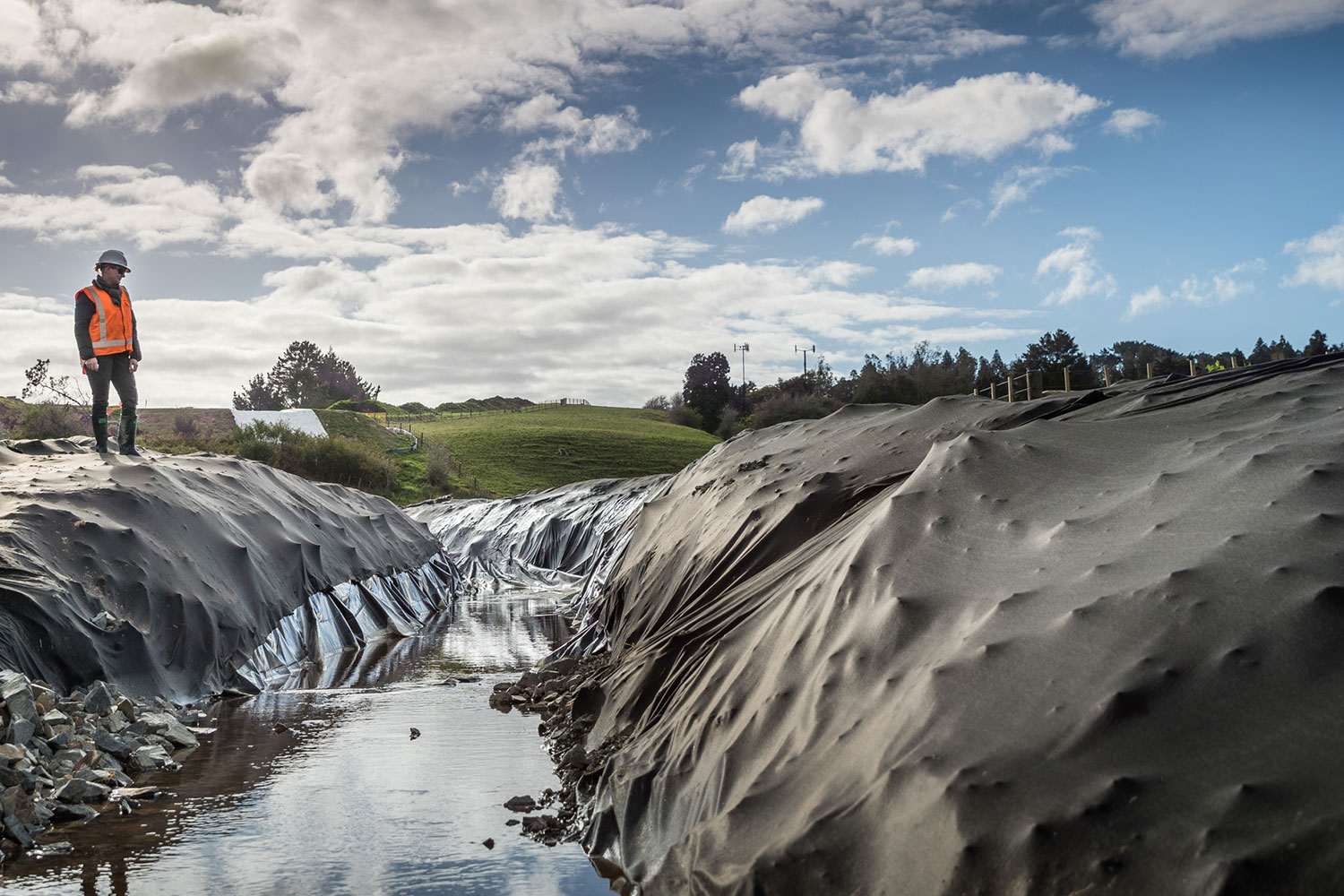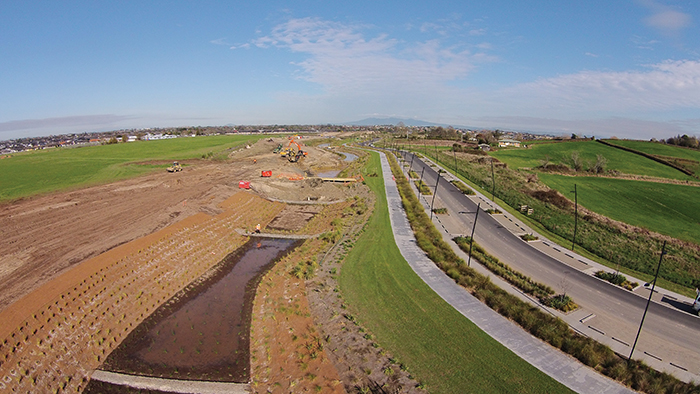A Best Practice Guide to Erosion and Sediment Control
Erosion and sediment control are two distinct though related processes. Erosion control is preventing the washing away of soil particles by the action of wind or rain, while sediment control relates to controlling or containing the sediment laden water once erosion has taken place. In addition to this sedimentation is the process where water borne sediments drop out of the water and accumulate on a riverbed or plain.
Erosion from rain happens when the energy of the raindrops is sufficient to disturb the ground, or when the raindrops can accumulate to form small streams that have enough energy to dislodge soil particles and carry them away. A number of factors affect the degree of erosion, such as the type of soil, the angle of the site and the length of the flow path. Generally, more energy is generated on steeper sites and longer flow paths, and heavier rain events.
Once the water borne sediment enters a waterway, it will flow with the water until there is sufficient reduction in velocity for it to settle out. This causes adverse environmental effects such as aesthetics (discolouration of waterways) and smothering of aquatic flora and fauna.
Therefore, erosion and sediment control measures are critical to minimising the effects of these processes on the receiving environment which would otherwise be altered significantly by earth disturbing activities. Both processes are important but the emphasis should be on erosion control to minimise the initial mobilisation of sediment.

When do we need erosion & sediment control?
Erosion & sediment control measures are required on any site where the natural vegetation is disturbed to the point that erosion is accelerated. This is most commonly seen on subdivisions and roadworks sites. The negative environmental effects of large scale erosion that is not managed is simply unacceptable given the damage it causes to rivers, estuaries and harbours, as well as the nearby areas that are used as overland flow paths in a storm event. Some of the specific issues that have been documented are as follows:
- Aquatic life being smothered by sediment
- Destroying spawning grounds and other habitat changes
- Removal of food sources such as algae and vertebrates from the waterway
- Reduced fish feeding ability due to high turbidity from suspended particles
- Reduced light penetration resulting in lower photosynthesis and subsequent plant growth
- Increased flooding and associated damage caused by blocking of waterways with sediment
- Reduction in the amount of usable water for irrigation and stock, ie clogging of pumps and filters
- Unsightly discolouration of waterways
Compliance with local authority regulations
Local authority regulations are put in place to protect our environment, not only for the people that live in the area but also the wildlife that depend upon our streams and waterways. Protecting our habitat now ensures that future generations can enjoy all the things that we now take for granted, such as clean waterways for fishing, swimming, boating, and of course clean water for drinking.
New Zealand has a clean green image which attracts visitors from all over the world bringing with them millions of tourist dollars which many of our communities rely upon to exist.
The biggest pitfalls we see in the industry is contractors not installing products correctly or even not installing control measures at all. Erosion and sediment control is an essential part of any earthworks project and should be installed to industry best practice, as well as any local regulations.
Education is a key to getting control measures installed correctly. Many councils run workshops and field-days promoting best practices, and industry leaders such as Cirtex Industries Ltd work alongside Regional Authorities assisting wherever possible, whether it be through attending workshops and field-days or on the ground advising customers of products and best practice guidelines.

Erosion control often takes the form of a matting laid on the bare earth surface. This could be a non-woven geotextile typically used for temporary works, or a coir matting which is intended to provide protection until vegetation can establish. These surface mats reduce the impact of raindrops, and help to prevent them concentrating into rivulets.
Sediment Control will often be a SiltFence or Super SiltFence, or tubular socks and logs such as erosion control socks or coir logs.
Once soil particles have mobilised and been carried from the site they can be collected in sediment control ponds which are an effective way of allowing sediment to settle out before leaving the earthworks site. Constructing these ponds to work correctly and only allow the cleanest water to flow away is quite a science. Check out these details by clicking here, and check out this video of a decanting earth bund in action.
EnviroSieve Turbidity Curtain used at the Greville Road project in Albany, Auckland


